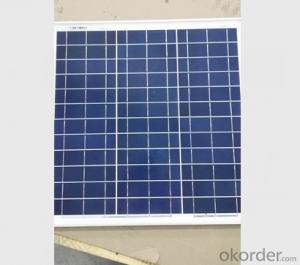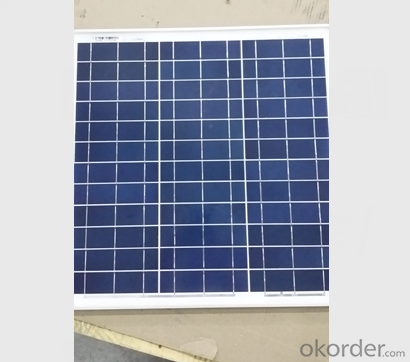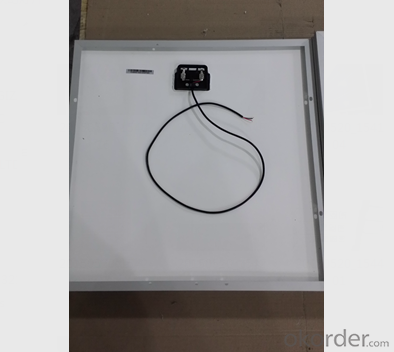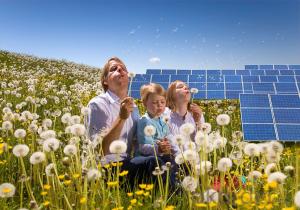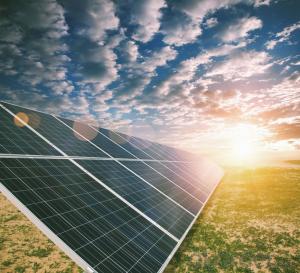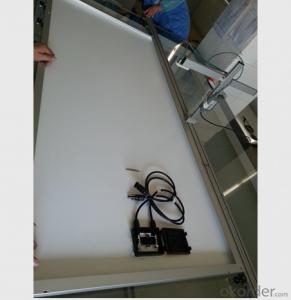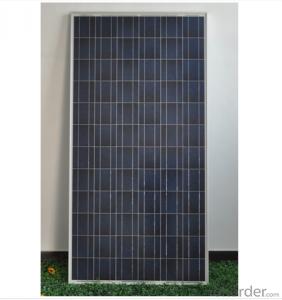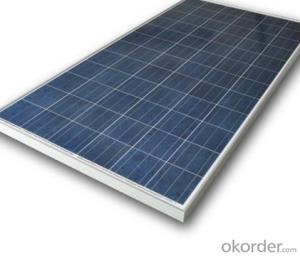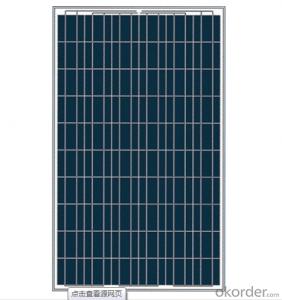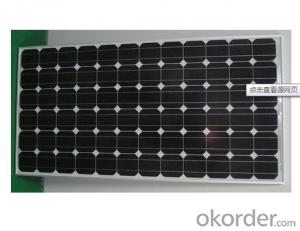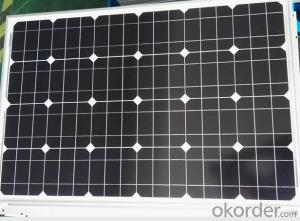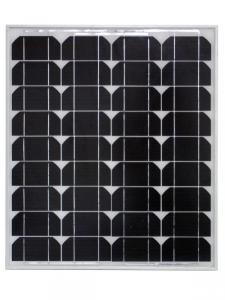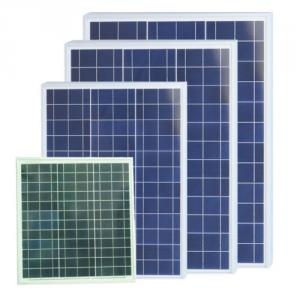Solar Panels Kent - Polycrystalline Solar Panel CNPV-32W High Performance 36 Cell
- Loading Port:
- Shanghai
- Payment Terms:
- TT OR LC
- Min Order Qty:
- 25 pc
- Supply Capability:
- 100000 pc/month
OKorder Service Pledge
OKorder Financial Service
You Might Also Like
Product Description:
Solar Polycrystalline Series Panels
Introduction of Solar Polycrystalline Series Panels
CNBM Solar photovoltaic (PV) Panel is designed for large electrical power requirements. It is the optimal choice for both on-grid and off-grid power systems. CNBM Solar panel offers high performance of power per square foot of solar array. Monocrystalline silicon(c-Si): often made using the Czochralski process. Single-crystal wafer cells tend to be expensive, and because they are cut from cylindrical ingots, do not completely cover a square solar cell module without a substantial waste of refined silicon. Hence most c-Si panels have uncovered gaps at the four corners of the cells.
Standard Test Conditions of Solar Polycrystalline Series Panels
The opto-electrical specifications shown below are stabilized values being measured at Standard Test Conditions, Irradiance: 1000W/m2, Spectrum: AM1.5 at 25°C, The info below is subject to manufacturing tolerances. Where appropriate minutes of measurement are available and are used for the dimensioning of the installation.
Advantages of Solar Polycrystalline Series Panels
• Solar performance guarantees for 25 years
• 5 years guarantee for workmanship
• Timeliness of delivery
Characteristics of Solar Polycrystalline Series Panels
Max Power Voltage Vmp (V) | 18V |
Max Power Current Imp (A) | 1.84A |
Open Circuit Voltage Voc (V) | 21V |
Short Circuit Current Isc (A) | 1.99A |
Max Power Pm (W) | 32W |
Temperature Coefficient of Cells
NOCT | 47℃±2℃ |
Temperature Coefficients of Isc (%/℃) | 0.064 |
Temperature Coefficients of Voc (%/℃) | -0.33 |
Temperature Coefficients of Pmp (%/℃) | -0.45 |
Mechanical Data Solar Polyocrystalline Series
Power | 32W |
Dimension | 517×517×18mm |
Weight | 4kg |
Tolerance | ±3% |
The dimension of the modules can be changed according to the demand of clients
Limits
Operating Temperature | –40 °C to +85°C |
Storage Temperature | –40 °C to +85°C |
Max System Voltage | 700V |
Guarantee Solar Polyocrystalline Series Panels
Products Guarantee | 5 yrs free from defects in materials and workmanship |
Performance Guarantee | No less than 90% within 10yrs and no less than 80% within 25yrs |
Certificates | UL, IEC, ISO, TUV, CE |
The Examination of Solar Polyocrystalline Series Panels
FAQ
We have organized several common questions for our clients,may help you sincerely:
①What price for each watt?
It depends on the quantity, delivery date and payment terms, it should be discussed in peticular.
②What is your size for each module? Can you tell me the Parameter of your module?
We have different series of panels in different output, both c-Si and a-Si. Please take the specification sheet for your reference. Or you can check the above data for your reference.
③Can you provide the peripheral products of the solar panels, such as the battery, controller, and inverter? If so, can you tell me how do they match each other?
Yes, we can, and we will need some specified data for our design.
④What is your warranty system?
Our product performance guarantees for 25 years, includes 5 years guarantee for workmanship
⑤How do you pack your products?
We have rich experience on how to pack the panels to make sure the safety on shipment when it arrives at the destination.
- Q: I have a cabin that is way out in the middle of no where, it would cost 000's of dollars to get power to it. If I have a 8,000 BTU air conditioner that runs on 25 volts and 5 amps (or 875 watts)How many solar panels will I need to run this during the day, plus charge the batteries to run it all night? How many batteries would I need
- You would need 6 300 watt solar panels, US price around $300 per, And a minimum of 4 batteries. You are going to have major problems only having 5 hours of sun though.I am not sure you could get it to work with only that much sunlight. Along with an inverter and some other controller units. If you live in an area that has some wind, a wind generator would knock it down to where you would only need 2 solar panels and a small 500 watt wind generator. The problem you are going to have is trying to run it all the time. I had an AC that size in my camping van, it took about 20 minute to run two batteries down so low that the inverter started to sound the low battery alert. If I left it running it did ok, and I had an over-sized alternator for it. I had a 50 amp heavy truck alternator. A swamp cooler would be a lot less energy, you could easily recycle about 95% of the water. I know this is the 2st century and this may sound a little nuts, but with only 5 hours of daylight, if you have some trees you could use for burning you could build an outdoor steam engine cheaper and it would charge a lot more batteries in a lot less time. Plus you could run off the steam engines generator for as long as you had a fire day or night. Even a small 55 gallon water tank would give you plenty of head for the steam. You could easily run a 6000 watt generator off of it and have plenty of electricity while it was running. Just a thought, I had to resort to some extreme measures when I bought some Montana land in 2000, it was 6 miles to the nearest utility pole.
- Q: I am interested in installing a home solar panel system. In my city, we get a little over 5 hours of sun, and I typically use about 800-900 kwh per month.The available roof space is small- approximately 600 sqft.The online calculators provided on various sites are not uniform, thus providing inconsistent responses with the same input data.I think I need a 5kw system approximately. Can anyone verify that and provide a link for a reasonably priced system to meet my needs? Prefer grid-tied, but off-grid is acceptable as well.Thanks!
- And at what tilt? Are there trees, poles, or buildings that cast a shadow on the roof at any time? Is the space clear of vent pipes (these can be moved, but it's extra work and cost)? Probably your best move is to contact a solar installer, and get a free quote on a system. Have them quote a system that you own, not a lease. They will do an analysis of your home, which will be very valuable even if you decide not to use a professional. If there are no professional installers in your area, that's an indication that your area may not be good for solar.
- Q: I know that one LED can't power a solar panel. I have found 40 kmcd LED's on OKorder. I know that several of them (28 totale each one with a 470 ohm resistor all at 2 VDC) can show a reflection on a wall in daylight 60 feet away..
- The 40 kmcd rating is a measure of luminous intensity (how bright it looks), not a measure of output power of the visible light. We can estimate the performance of your proposed system as follows: The LEDs on OKorder each are rated about 20mA maximum at about 3.2V, or 64mW (milliwatts). If you use 470 ohm resistors connected to 2VDC, the current that will flow, per LED, will be about: (2V-3.2V)/470ohm = 0.0872A = 8.72mA The power taken from the 2VDC power source will be: P2v = 2V x 8.72mA = 224.6mW (per LED) The power input to each LED will be about: Pled = 3.2V x 8.72mA = 59.9mW (per LED) The LED has a luminous efficiency that can range from about 4.2% to 22%. This efficiency is the ratio of the amount of visible light output (in watts) divided by the input power (in watts). The OKorder listing doesn't identify the output power level (either in watts or in lumens), so let's assume a 0% efficiency. The LED output power will be about: Pout = 59.9mW x 0% = 5.99mW (per LED) A solar panel converts visible light to electrical energy with an efficiency that ranges say about 6% to 8%. Suppose the solar panel efficiency is 2%. Then the electrical power output by the panel will be about : Pe = 5.99mW x 2% = 0.72mW (per LED) If you shine 00 LEDs on the panel, the output electrical power will be 00 times that amount: Pe00 = 0.72mW/LED x 00 LED = 72mW <===ANSWER The power taken from your 2V source will be about: P2V00 = 224.6mW/LED x 00 LED = 22460mW = 22.46W The system efficiency will be about: Eff = solar output / battery input = Pe00 / P2V00 = 72mW / 22460mW x 00% = 0.32% SUMMARY: If you shine 00 of the LEDs on the panel, you will capture back about 0.32% of the energy expended, or regain about 72mW.
- Q: How do solar panels interact with the electrical grid?
- Solar panels interact with the electrical grid through a process called net metering. When solar panels produce more electricity than is being used, the excess power is sent back to the grid, and the owner is credited for the energy produced. Conversely, when solar panels don't generate enough electricity, energy is pulled from the grid to meet the demand. This bidirectional flow enables solar panel owners to offset their energy usage and contribute to the overall energy supply.
- Q: How often do solar panels need to be replaced or repaired roughly? Is it costly to do so?
- This Site Might Help You. RE: How much maintenance do solar panels require? How often do solar panels need to be replaced or repaired roughly? Is it costly to do so?
- Q: How do solar panels affect the grid during times of high electricity demand?
- During times of high electricity demand, solar panels can help alleviate pressure on the grid by generating clean and renewable energy. As solar panels produce electricity directly from sunlight, they can contribute to meeting the increased power needs without relying heavily on traditional power plants. This reduces the strain on the grid and helps ensure a stable electricity supply during peak demand periods.
- Q: Can solar panels be installed on convention centers or event venues?
- Yes, solar panels can be installed on convention centers or event venues. In fact, many convention centers and event venues have already embraced solar energy as a sustainable and cost-effective solution. Installing solar panels on these large rooftops can help generate clean and renewable energy, reduce electricity bills, and contribute to a greener environment.
- Q: I was trying to figure out if I could run an electric heater off of a solar panel, but I don't understand these electric convertion factors and stuff. Would it work? (I know it'll only work in the daytime and stuff.)SOLAR PANELPeak Power 95W PTC Watts 73.0WVoc 30.7VPeak Voltage 24.4VIsc 8.6APeak Current 7.96A HEATERInput: 20 V/60 Hz ,500 W/5,200 BTU
- You will have to run the solar panel to a 2v or 24 v battery array that use an inverter to convert the battery power to 20 for the heaters.
- Q: Can solar panels be used to power a disaster relief operation?
- Yes, solar panels can be used to power a disaster relief operation. Solar panels are a sustainable and reliable source of energy that can provide electricity in areas affected by natural disasters or other emergencies. They can be set up quickly and can generate power even in remote locations. Solar panels can be used to charge batteries, run communication systems, power medical equipment, provide lighting, and support other essential needs during disaster relief operations.
- Q: Are there any restrictions on installing solar panels in certain areas?
- Yes, there may be restrictions on installing solar panels in certain areas. These restrictions can vary depending on local regulations, homeowner association rules, and building codes. Some areas may have permit requirements, aesthetic guidelines, or zoning restrictions that limit the placement, size, or visibility of solar panels. It is important to research and comply with these regulations before installing solar panels in any specific location.
Send your message to us
Solar Panels Kent - Polycrystalline Solar Panel CNPV-32W High Performance 36 Cell
- Loading Port:
- Shanghai
- Payment Terms:
- TT OR LC
- Min Order Qty:
- 25 pc
- Supply Capability:
- 100000 pc/month
OKorder Service Pledge
OKorder Financial Service
Similar products
Hot products
Hot Searches
Related keywords
